One would think that by 2020, the watch world had managed to yield up just about every type of calendar for the wrist — from the utter simplicity of a date window to the complexity of a perpetual calendar, and from practical annual calendars to esoteric “weekly” calendars like recent models from Blancpain and Patek Philippe. But leave it to MeisterSinger, the iconoclastic manufacturer from Münster, Germany, near the Dutch border, to come up with the quirkiest one yet. Ladies and gentlemen, I give you the Astroscope, an astronomically inspired day-and-date calendar timepiece with a special connection to the year 2020.

The Astroscope is a sequel of sorts to MeisterSinger’s first astronomical-themed watch, 2018’s Lunascope (reviewed here), which garnered loads of positive attention for its big, photorealistic moon-phase complication paired with the brand’s emblematic single hand and a sunburst blue dial. Like that watch, the Astroscope cleverly adds a complication to its unconventional hour-minute display without adding additional hands or subdials.
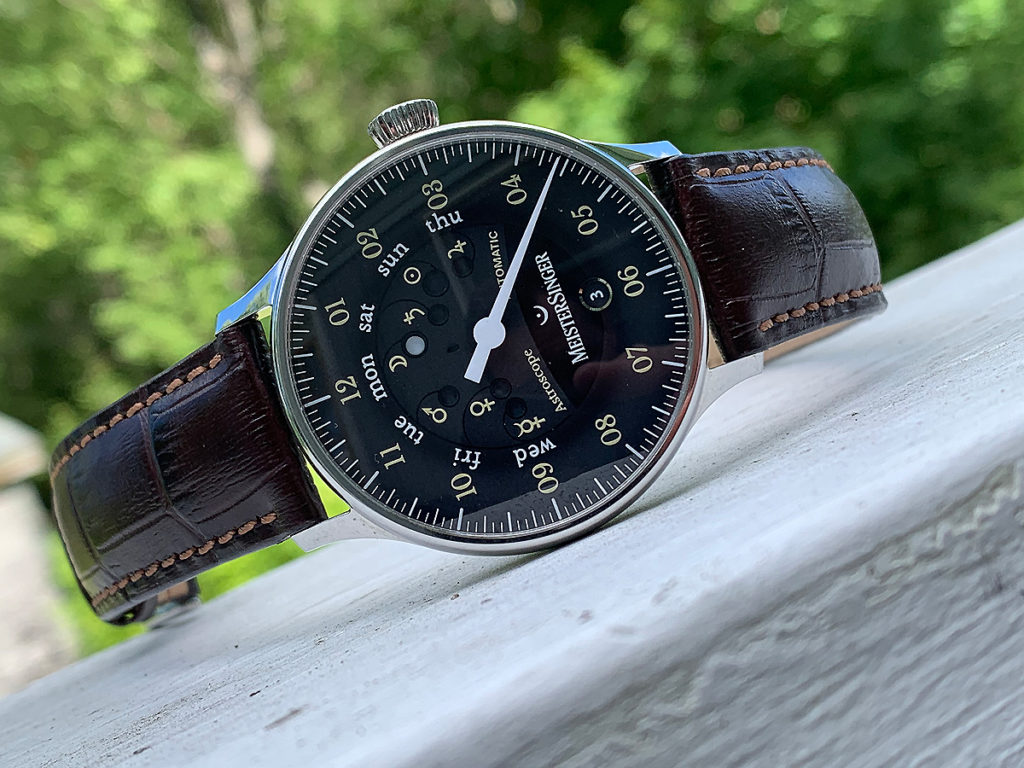
To start with the basics: Like most of MeisterSinger’s collection, the Astroscope employs an ultra-minimalist, single-handed timekeeping system: one large, gauge-type hand traversing a 12-hour dial, with markers between each numeral dividing each hour segment into 15-minute (and smaller five-minute) increments. The hand circles the dial twice per 24-hour period, with the date (here in a round window at 6 o’clock) flipping over to the next numeral after each 24 hours. The Arabic hour numerals are all double-digit, to maintain a sense of symmetry. MeisterSinger boasts that its watches are not for wearers concerned about “the hectic passing of seconds,” thus the dial of the Astroscope, like so many of its brethren, is indicating 4:30 — or possibly 4:28 or 4:31 — when its central hand hovers halfway between “04” and “05.” It’s a very casual and consciously laid-back way of telling time.
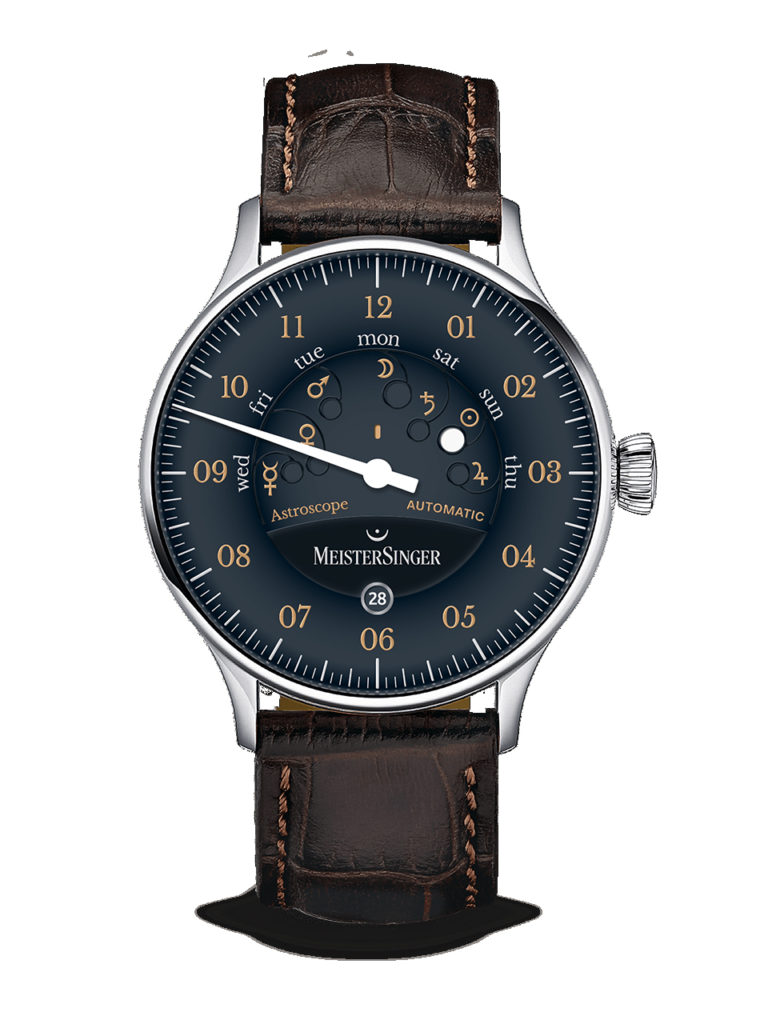
But on the Astroscope, there’s an added twist. As a close look at the dial reveals, the seven days of the week are arranged in a semicircular scale, each one paired up with an aperture and a zodiac symbol, and in an order that is decidedly non-chronological. Most planets are named after Roman gods while most weekdays are named after Norse Gods. The exceptions are Monday (named for the moon) and Sunday (named for the sun). What that leaves us with are five days: Tuesday is named for the Asgardian god Tyr, god of war; his equivalent in Roman mythology is Mars, from which the planet takes its name. Thus, Tuesday is linked to the planet Mars. The rest of the week follows similar suit: Wednesday is connected to Mercury (and the Norse God Woden); Thursday to Jupiter (and Thor, Norse god of Thunder); Friday to Venus (and Frigga, Queen of the Asgardians); and Saturday to Saturn (named not for a Norseman but for the Roman titan Saturn). That explains the symbols, but why the odd order, with Wednesday/Mercury at the beginning of the arc and Thursday/Jupiter at the end? It’s because of an astronomical event that occurs only every 10 to 12 years (including in July 2020), in which the five planets connected to the weekdays can be viewed simultaneously in the night sky, in an arc-shaped constellation of the type that inspired this dial’s display.
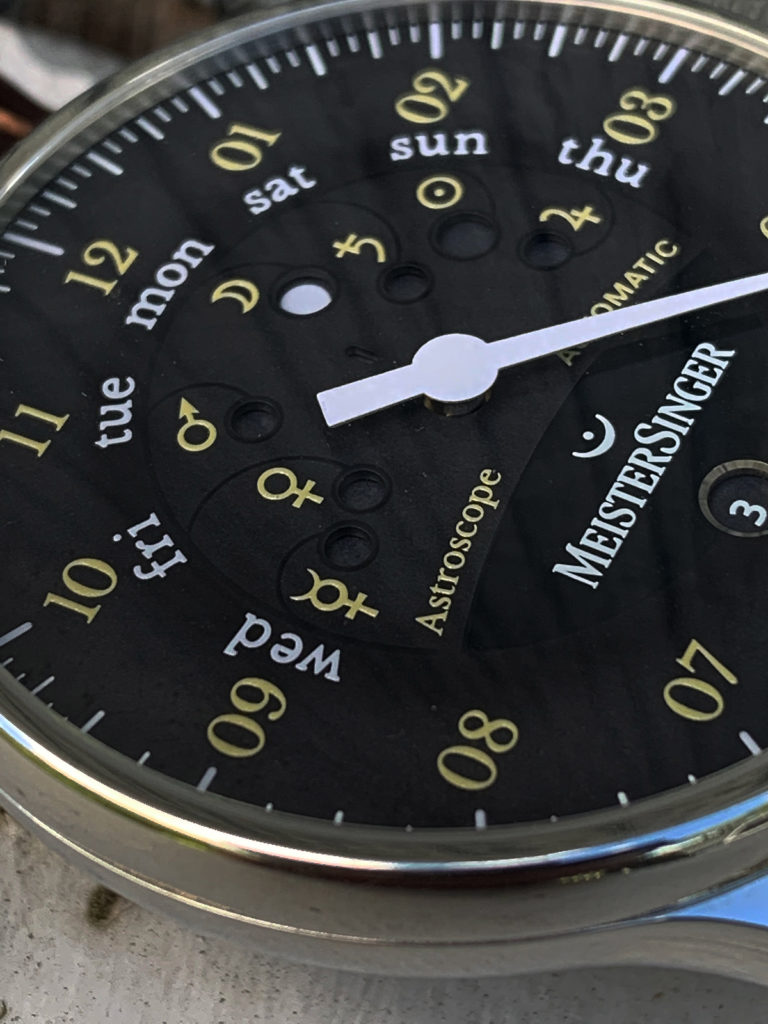
The moving white dot that indicates the day, which must be coordinated via the crown with the date numeral in the small circular window at 6 o’clock, jumps at midnight to the next day, in proper chronological order. If the watch’s functions were videotaped and played at high speed, the dot would appear to jump randomly across the arc over the span of the week due to the placement of the days and apertures, which presumably approximates the actual alignment of the planets, sun, and moon during the astronomical phenomenon.
The stainless steel case is a comfortable 40 mm in diameter and sports a mostly polished finish. The lightly curving lugs are somewhat long and thin, hugging the wrist but leaving a substantial space between the top and bottom of the case and the leather strap. The bezel is really just a thin, beveled frame for the expansive, curved sapphire crystal over the dial. The crown is designed in a vintage-inspired, fluted onion style, like one you might find on historical pilot’s watches though not nearly as large. It is, for most fingers, large enough to easily grasp and wind the watch’s movement and set the time.
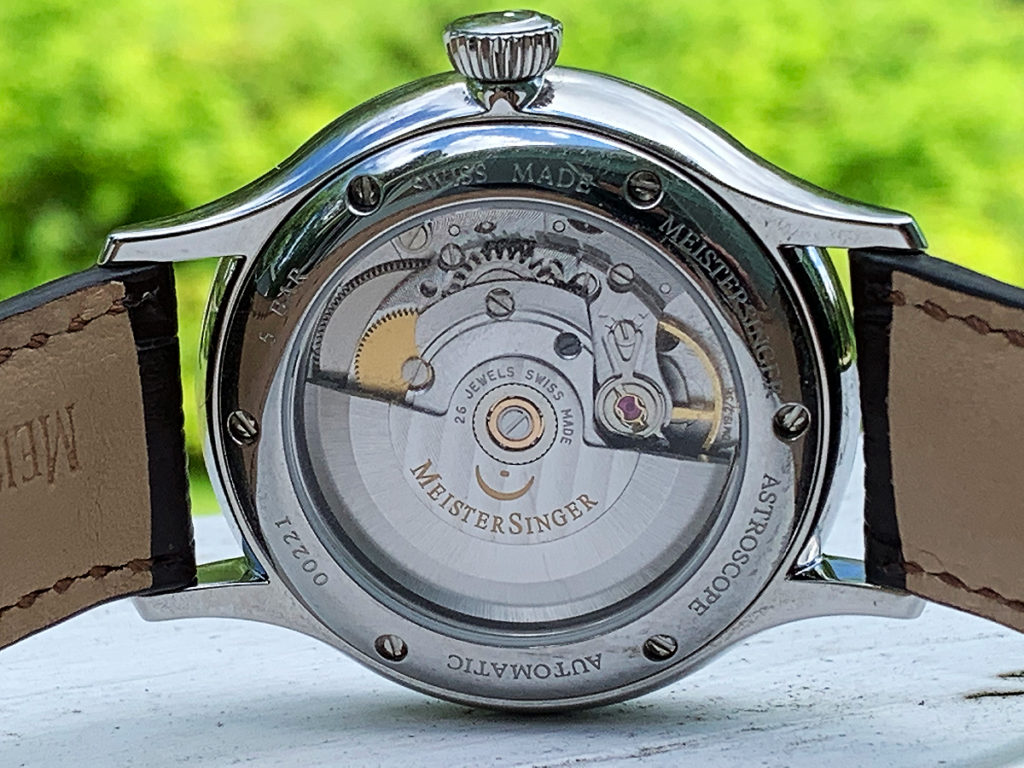
The self-winding movement inside, displayed behind an exhibition caseback, is a Swiss-made Sellita SW220-1, modified by MeisterSinger with its signature côtes-de-Genève rotor, the same caliber used in the Lunascope. (MeisterSinger watches, as attested to by the engravings on their casebacks, are German-designed but Swiss Made.) The most significant feature that the team from Münster added to this reliable workhorse caliber is the disk with specifically positioned white dots (aligned with the dial’s day apertures), which rotates in one direction under the central hands to create the non-orderly indication of days. The movement runs in 26 jewels, beats at a frequency of 28,800-vph, and holds a power reserve of a fairly standard 38 hours. To this reviewer, a longer power reserve would be quite a boon to this watch’s user-friendliness, as the somewhat vexing process of re-setting the day and date after the watch runs down could be kept to a minimum. Of course, this reviewer is also well aware that such an upgrade would also mean a substantial boost in the price.

The Astroscope is offered in two versions, both with black dials. My review watch, with its “Old Radium” cream-colored Super-LumiNova on the numerals and weekday symbols, is probably a smidgen more legible than the other model, whose numerals are in blue, though both are quite striking, and it’s hard to ever get totally lost in figuring out the time thanks to the large, white hand. The Old Radium model comes on a contrast-stitched brown leather strap with a steel pin buckle; the “Black Blue” model (below) is on a tan leather strap. Again, the Astroscope is not a timepiece for those obsessed with punctuality or who prefer their calendar displays more simply arranged; for those seeking something more interesting and, dare I say, challenging, this astronomical timepiece comes highly recommended — and, at an MSRP of $1,990 euros, it’s also very fairly priced. Best of all, if you’re looking for a fashion accessory to wear a few years down the road that will remind you of the turbulent year that was 2020, this watch makes a much more elegant statement than a much-used old cloth face mask.

| Manufacturer: | MeisterSinger GmbH & Co. KG, Hafenweg 46, D-48155 Münster, Germany |
| Reference number: | AS902OR |
| Functions: | Hours and minutes on single hand, day and date |
| Movement: | Sellita SW220-1, automatic, frequency = 28,800 vph, power reserve = 38 hours, 26 jewels, côtes de Genève pattern on rotor |
| Case: | Stainless-steel case, exhibition caseback with six screws, sapphire crystal, water resistant to 50 meters |
| Bracelet and clasp: | Dark brown leather strap with steel pin buckle |
| Dimensions: | Diameter = 40 mm, height = 10.5 mm |
| Price: | 1,990 euros |




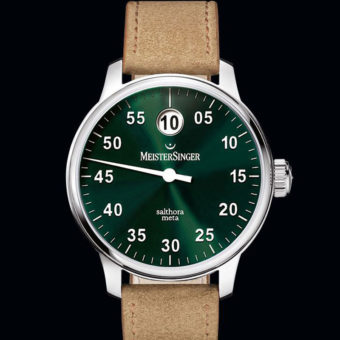
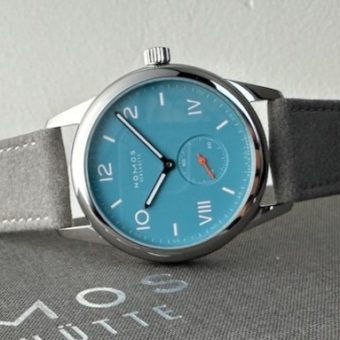
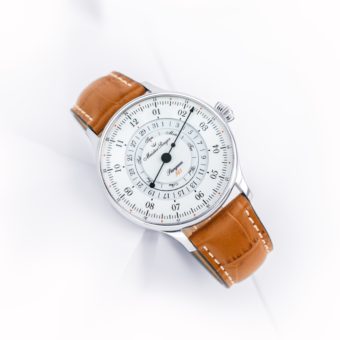
Is it really Super LumiNova on this watch? From the photos it doesn’t appear that the hand is luminous, and if it isn’t, what sense is it for dial markings to be luminous?
Pass…
Pry a Rolex only type of dude..